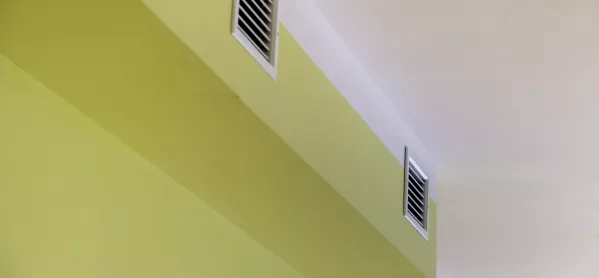Ventilation in schools: what do teachers need to know?

Recent headlines have suggested that classrooms will be freezing this winter as school windows are hurled open wide to provide ventilation and reduce the spread of the coronavirus.
Current government advice is that teachers “balance the need for increased ventilation while maintaining a comfortable temperature”. Some, however, have argued that this advice is insufficient[1].
Although it is encouraging to see the attention that ventilation is now receiving (it has long been known to provide health, wellbeing and cognitive benefits), there is good reason why official advice suggests a balance has to be struck between ventilation, thermal comfort and energy use[2] - and freezing classrooms are not a necessary outcome of striking that balance.
In short, it seems that there is still confusion around what works and what doesn’t when it comes to ventilation and Covid-19.
Coronavirus: Why does ventilation matter in schools?
Why the focus on ventilation at all? It’s all down to the risk of far-field transmission of Covid-19 via virus in airborne respiratory particles (aerosols). However, to date this spread has primarily been observed in poorly ventilated and crowded indoor spaces. In such conditions the airborne particles can accumulate in relatively high concentrations and over time a susceptible individual, in such an environment, has a greater risk of inhaling an infective dose.
If an infected individual is in an indoor environment they will release virus particles through respiratory activities (eg breathing, talking, singing) which are at the highest concentration in the exhaled puff, so social distancing and reduced face-to-face time remain important mitigating factors.
Aerosols that are small enough to remain airborne become diluted in the indoor air and without suitable ventilation they can build up, increasing the risk of exposure for susceptible individuals. Ventilation can play an important role in minimising the build-up of aerosols in a space and will reduce exposure risk.
What is the risk in schools?
However, this does not mean that classrooms are automatically unsafe. In fact, ventilation has always been a key component of classroom design. Where classrooms are poorly ventilated, this is usually due to occupant behaviour - for example, keeping vents closed in a bid to be more energy efficient.
There is a law of diminishing returns in reducing transmission risk with ventilation: the risk reductions in ventilating a poorly ventilated space are much more than the risk reductions in over-ventilating a well ventilated space.
Although too much ventilation can be a problem, particularly in the winter months. Over-ventilation can lead to occupant discomfort and undesirable behaviour, such as shutting ventilation off completely.
If a teacher wants to know how well their classroom is ventilated, carbon dioxide sensors can be a useful indicator.
What are the implications of the current advice?
Bearing these factors in mind, the current advice that we aim to deliver at least guidance airflow and to over-ventilate when reasonable to do so, begins to make more sense, particularly when we also factor in how ventilation works when it is cold outside.
In winter, the driving forces for natural ventilation (pressure differences caused by wind and differences in temperature between indoors and outdoors) are usually greater and so, to deliver the same flow rate, windows and vents do not need to be opened as wide in the winter as in the summer.
All of this is to say that, despite the criticisms of the government’s current advice that schools should “balance the need for increased ventilation while maintaining a comfortable temperature”, this seems to me to be the most sensible position to take.
It’s also worth noting that not all classrooms are naturally ventilated. Some have mechanical supplies of outdoor air. Information on best practice use of such systems is freely available from CIBSE[3].
But, ultimately, while ventilation is important, it is not a panacea. It should be used in conjunction with other non-pharmaceutical interventions.
Further detailed reasoning with respect to ventilation can be found in v4 of the CIBSE Covid-19 ventilation guidance and additionally there is a thorough review by the Energy Modelling Group of SAGE on the role of ventilation in controlling SARS-CoV-2.[4]
Dr Chris Iddon is chair of Chartered Institution of Building Services Engineers Natural Ventilation Group
References:
- [1] Independent SAGE Report 26: An Urgent Plan for Safer Schools
- [2] Department for Education Guidance for full opening: schools Revised 26 November 2020
- [3] CIBSE Covid-19 Ventilation Guidance V4
- [4] EMG: Role of ventilation in controlling SARS-CoV-2 transmission, 30 September 2020
You need a Tes subscription to read this article
Subscribe now to read this article and get other subscriber-only content:
- Unlimited access to all Tes magazine content
- Exclusive subscriber-only stories
- Award-winning email newsletters
Already a subscriber? Log in
You need a subscription to read this article
Subscribe now to read this article and get other subscriber-only content, including:
- Unlimited access to all Tes magazine content
- Exclusive subscriber-only stories
- Award-winning email newsletters